Uncover Top-Rated Age Spot Removal Treatments Today
Age spots, caused by sun exposure and melanin production, can be treated effectively through special…….
Welcome to an extensive exploration of age spot removal, a cosmetic procedure gaining significant traction globally. This article aims to guide readers through the intricate world of reversing age-related skin changes, offering valuable insights into its effectiveness, applications, and future potential. By delving into various facets, from scientific foundations to global trends and economic implications, we will uncover the comprehensive landscape of this transformative process.
Age spot removal, also known as age spot treatment or skin rejuvenation, is a dermatological procedure designed to reduce or eliminate age spots, hyperpigmented areas, and other signs of skin aging. It involves a combination of techniques, including chemical peels, laser therapy, microdermabrasion, and topical treatments, all aimed at stimulating collagen production and improving skin texture.
The pursuit of youthful-looking skin has deep historical roots, spanning ancient civilizations to modern times. Traditional methods like exfoliation and herbal remedies have evolved into today’s advanced technologies. The 20th century witnessed the introduction of laser treatments, revolutionizing age spot removal. In recent years, a surge in demand has driven innovation, leading to safer, more effective procedures.
Beyond aesthetic improvements, age spot removal plays a crucial role in restoring self-confidence and addressing psychological impacts associated with skin aging. It finds applications in various sectors, from dermatology to cosmetic surgery, catering to diverse patient needs and preferences.
Age spot removal has become a global phenomenon, with every region adopting unique approaches and techniques. The Asian market, for instance, prioritizes gentle, natural ingredients, while Western countries focus on advanced laser technologies. This diversity shapes a vibrant international industry, offering varied solutions to suit different skin types and cultural preferences.
Several key trends are driving the global age spot removal market:
The impact varies across regions:
| Region | Market Dynamics | Key Opportunities |
|---|---|---|
| North America | High adoption rate of advanced technologies; strong focus on research and development. | Expansion into niche markets like anti-aging skincare for millennials. |
| Europe | Strict regulatory environment driving innovation in safe, effective treatments. | Leveraging European expertise in cosmetic surgery for premium age spot removal services. |
| Asia | Growing middle class embracing anti-aging treatments; preference for natural ingredients. | Development of hybrid treatments combining traditional and modern techniques. |
| Latin America | Emerging market with significant potential due to increasing disposable income. | Focus on accessible, affordable age spot removal options. |
The global age spot removal market is experiencing robust growth, projected to reach USD 12.8 billion by 2027, growing at a CAGR of 6.5% (2020-2027). This expansion is driven by increasing consumer awareness, rising disposable incomes, and the aging population.
While the market thrives, challenges exist:
Technological innovations have revolutionized age spot removal, offering safer, more effective treatments:
These advancements have significantly improved:
Ongoing research explores:
Age spot removal is subject to stringent regulations, ensuring safety and effectiveness. Major regulatory bodies include:
Regulatory environments impact:
Despite its advancements, age spot removal faces several challenges:
| Challenge | Description |
|---|---|
| Inconsistent Results: Treatment outcomes vary based on skin type, age spots’ depth, and individual responses, leading to patient dissatisfaction. | Requires personalized approaches for optimal results. |
| Side Effects: Some procedures carry risks, including temporary redness, swelling, and blistering, requiring careful patient selection and post-treatment care. | Stricter safety protocols and patient education are essential. |
| High Costs: Advanced technologies and specialized treatments can be expensive, limiting access for some consumers. | Subsidies and insurance coverage may improve accessibility. |
| Lack of Long-Term Studies: Limited long-term data on certain procedures raises concerns about durability of results. | Ongoing research is crucial to establish best practices. |
Proposed solutions include:
Case: A 42-year-old female presented with widespread hyperpigmentation due to sun exposure and hormonal changes.
Treatment: A combination of Fraxel dual laser therapy and topical vitamin C was recommended.
Outcome: After four treatments spaced over three months, significant improvements were seen, reducing hyperpigmented areas by 75%. The patient reported increased skin smoothness and an even tone.
Patient Profile: A 38-year-old man sought a non-surgical facelift alternative.
Procedure: Microneedling was performed using a 1.5 mm needle depth, followed by injection of his own PRP.
Results: After two sessions, the patient experienced improved skin texture, reduced fine lines, and a more youthful appearance. Follow-up treatments further enhanced results, lasting for over a year.
Scenario: A 55-year-old woman desired a safe, at-home age spot removal solution.
Solution: A dermatologist designed a personalized chemical peel using a blend of alpha hydroxy acids (AHAs) and retinoids suitable for her skin type.
Achieved Results: The patient experienced gradual fading of age spots and improved skin clarity, with minimal side effects. Regular use led to sustained results over six months.
The age spot removal market is poised for further growth, driven by:
Industry players should focus on:
In conclusion, age spot removal has evolved into a dynamic field, offering hope and rejuvenation to those seeking to reverse skin aging’s effects. With technological advancements, personalized approaches, and increasing accessibility, the future looks bright for this transformative process. As the industry navigates regulatory challenges and embraces emerging trends, it positions itself to cater to a growing global demand for effective, safe age spot removal solutions.
Q: How do I choose the right age spot removal treatment?
A: Consulting a dermatologist is essential. They assess your skin, consider your goals, and recommend suitable treatments based on your unique needs.
Q: Are there any at-home remedies for age spots?
A: While some natural remedies may help, severe or persistent age spots typically require professional treatments. Over-the-counter products can offer mild improvements but may not address deep hyperpigmentation.
Q: How often should I get age spot removal treatments?
A: Treatment frequency varies by procedure and individual results. Generally, follow-up sessions are scheduled every 3-6 months for optimal maintenance.
Q: What are the potential side effects of age spot removal?
A: Side effects vary by treatment. Common temporary issues include redness, swelling, and peeling. Serious risks are rare but may include infection or scarring. Qualified professionals minimize these risks with proper techniques.
Q: Can age spot removal prevent future aging?
A: While not a cure for aging, age spot removal can significantly reduce the appearance of hyperpigmentation and fine lines, contributing to a more youthful complexion. Regular skin care and sun protection are essential to maintain results.

Age spots, caused by sun exposure and melanin production, can be treated effectively through special…….
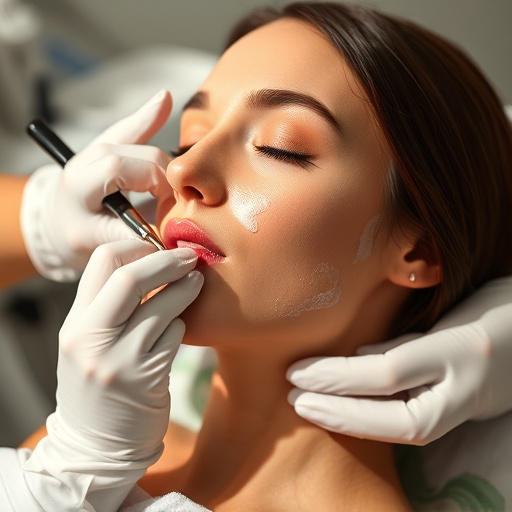
Age spots, caused by sun exposure, can be addressed through various methods, including surgical proc…….

Age spots, caused by melanin excess from sun exposure, genetics, hormones, or environment, require t…….
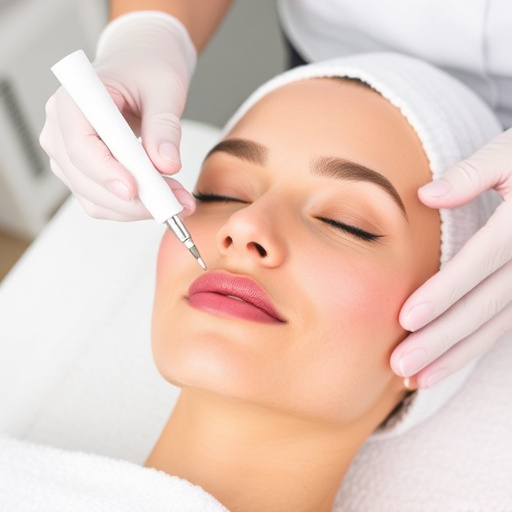
Age spots, caused by sun damage and melanin overproduction, can be effectively treated with professi…….
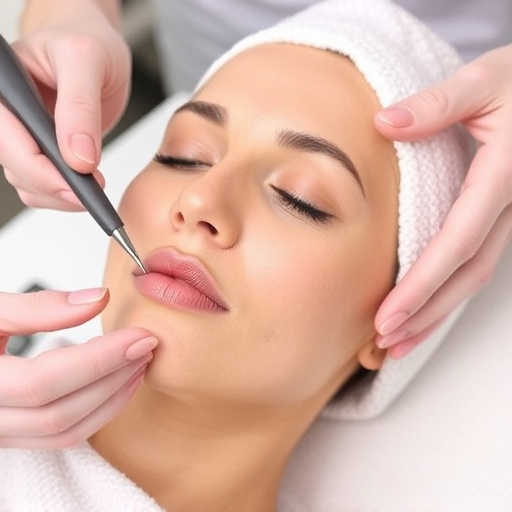
Age spots, caused by UV radiation, can be addressed through various treatments like chemical peels a…….
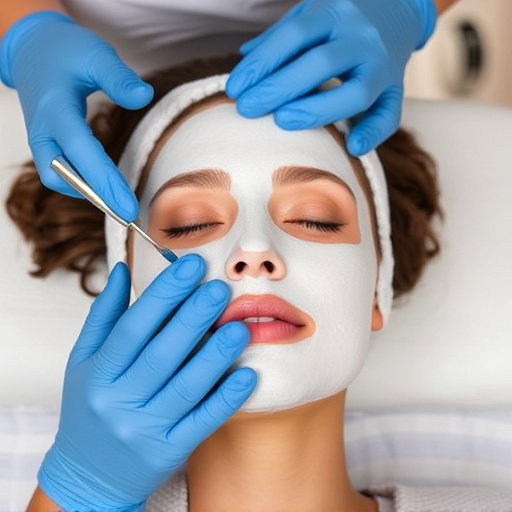
Proper post-care after age spot removal is crucial for achieving clear skin. This includes understan…….
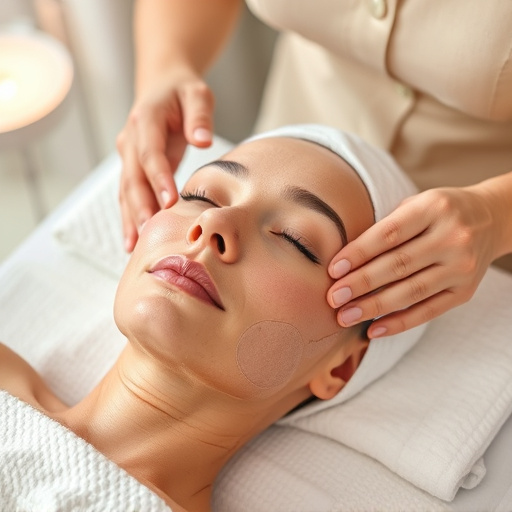
Age spots, caused primarily by sun exposure, can be treated with various methods, including professi…….

Age spots (hyperpigmentation) are caused by sun exposure, aging, and skin conditions, manifesting as…….